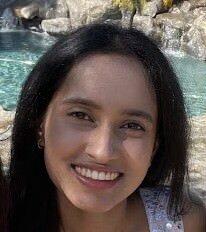Stepping out of our car and onto the front steps of Foothill Elementary School overwhelmed us with a rush of nostalgia. The easy, carefree memories of being a child, now long gone, still permeated from the neatly trimmed lawns and welcoming classrooms of an elementary school. As we walked through a corridor toward the office, we couldn’t help but wish to be become kids again. The peeling handball courts, which were new when we were there, are now being used by kids half our height, and the tether ball poles are barely in use anymore. These small things brought back so many good times.
However, when we stayed awhile longer, we began to notice the extent to which the school had transformed since our time in it.
First of all, because of changes in textbooks, the curriculum in math has also changed. The new publishers have established a new system of teaching math. Instead of simple worksheets, the teacher does hands-on work with the students for an hour and a half every day.
“All the math changed…[there are] games with this math program,” said Vicki Andary, who was a first grade teacher but now teaches third grade. Brown-haired and smiling, Mrs. Andary is one of the few teachers from the early years that still remain at Foothill Elementary. I can still recall learning about addition and listening in during storytime, back in the day. “It’s our first year teaching it, and it’s very time intensive and teacher oriented,” she said.
Many of the original timed-math worksheets, where students are timed while doing 50 problems of a single type of math, are not used anymore, but used to be an integral part of the math curriculum. However, Andary said that this new math is actually good because it allows for students to review old concepts while still learning new ones.
Language arts and science were not left behind either. In language arts, there is an anthology for readings, and the science has “mostly hands-on experirments,” said Andary.
When we visited Redwood Middle School, we noticed that standards for how well students perform in school have changed too. Shannon Avina, an 8th grade core teacher known for the lemon drops she gives out when a student notices a spelling or grammar mistake, said that standards are being raised higher each year.
Said Avina, “What kids are expected to do now is a lot different from what I had to do as a kid. Students are still learning the same topics, but there is a greater push from the community to make sure that they learn everything. Now, kids are expected to be college-ready when they are in 8th grade.”
Although higher expectations may be stressful to students, Avina believes that with the correct teaching methods, students can meet these standards.
“I think that as long as the learning experience, or lesson, that you provide is structured appropriately, kids can do anything,” said Avina. “Teachers need to meet the needs of each child individually. Each kid has different strengths and weaknesses; it’s not one size fits all. “
Although there are many changes in the school system and in the curriculum, most of these changes are an improvement on how school used to be. Despite that, for better or for worse, the changes don’t stop us from missing our childhood years.


























